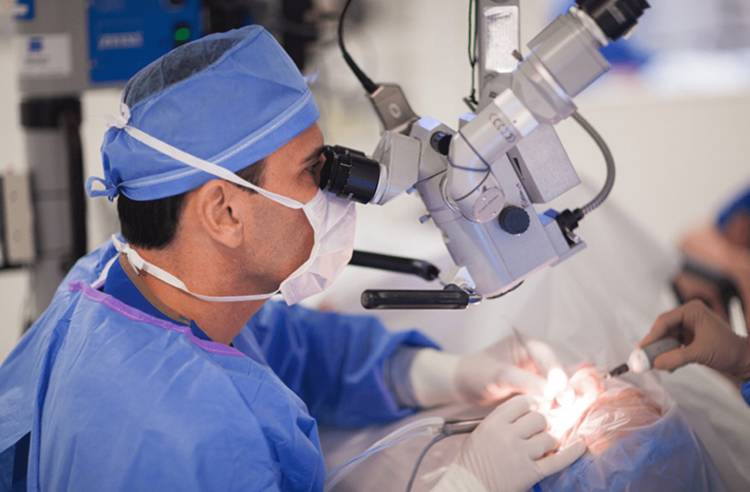
When is it Safe to Drive After Cataract Surgery?
Approximately 3 million procedures are performed on cataracts each year in the United States, with over 3 million procedures done in the United States each year. This surgery involves removing the cloudy lens of the eye & replacing it with an artificial lens to improve vision. While cataract surgery has a high success rate and can greatly improve a person's vision, it is important to consider the recovery process and when it is safe to restart daily activities such as driving.
Understanding Cataract Surgery
Before delving into when it is safe to drive after cataract surgery, it is important to have a basic understanding of the procedure. Cataracts occur when the eye's lens becomes cloudy, causing blurry or distorted vision. Cataract surgery includes making a small incision in the eye and using ultrasound waves to break up and remove the cloudy lens. The artificial lens is then inserted to replace the natural lens.
This surgery is usually done on an outpatient basis and only requires local anesthesia. While it is a relatively quick and simple procedure, the recovery process is crucial to ensure successful results.
After cataract surgery, it is common for patients to experience some discomfort and blurry vision. This is normal and should improve within a few days as the eye heals. However, it is important to follow your doctor's post-operative instructions to avoid any complications or delays in the healing process.
During the first few days after surgery, it is recommended to rest and avoid any strenuous activities. This includes driving, as the eye needs time to heal and adjust to the new lens. Additionally, your eye doctor will prescribe eye drops to control & prevent infection and reduce inflammation.
How Long After Cataract Surgery Can You Drive?
The most important factor in determining how long after cataract surgery can you drive is the clarity of your vision. Cataract surgery improves your vision, but it may take some time for your eye to adjust and reach its full potential. It is crucial to have good visual acuity before getting behind the wheel again.
According to the American Academy of Ophthalmology, most patients can resume driving within one week after cataract surgery. However, this timeline may vary depending on individual healing processes and the type of lens used during surgery.
It is important to note that every state has different regulations regarding driving after cataract surgery. Some states require a doctor's clearance before resuming driving, while others have specific guidelines for visual acuity. It is important to check with your doctor and local DMV to ensure you follow the proper regulations.
Signs That You Are Ready to Drive Again
While your doctor's approval and state regulations play a crucial role in determining when it is safe to drive after cataract surgery, some signs indicate you are ready to get back behind the wheel. These include:
- Clear vision: Your vision should be significantly improved, with minimal to no blurriness or distortion.
- Depth perception: You should be able to judge distances accurately and have a good sense of depth perception.
- Reaction time: Your reaction time should be back to normal, allowing you to respond quickly to any potential hazards on the road.
It is important not to rush into driving after cataract surgery. Take your time and assess your vision before getting behind the wheel. If you feel unsure or uncomfortable, it is best to wait a little longer.
Tips for Safe Driving After Cataract Surgery
Once your doctor has cleared you and you are ready to drive after cataract surgery, there are some precautions you can take to ensure a safe experience on the road:
- Start with short trips: It is always a good idea to ease back into driving by starting with short trips and gradually increasing the distance as you feel more comfortable.
- Avoid night driving: Your vision may still be adjusting, so it is best to avoid driving at night or in low light conditions until your doctor gives you the go-ahead.
- Wear sunglasses: The sun's glare can be harsh on your eyes, especially after cataract surgery. Wear sunglasses with UV protection to reduce glare and protect your eyes.
- Keep a clean windshield: Make sure your windshield is free of any dirt, debris, or scratches that could impact your vision while driving.
Potential Complications
While it is rare, some potential complications may arise after cataract surgery that can affect your ability to drive safely. These include:
- Blurry vision: If you have blurry vision after cataract surgery even after the initial healing period, it is important to speak with your doctor. This could be a sign of post-operative complications such as inflammation or swelling.
- Dry eyes: Some patients may experience dry eyes after cataract surgery, which can cause discomfort and impact vision. Using artificial tears can help alleviate this issue.
- Sensitivity to light: It is normal to experience sensitivity to light after cataract surgery, but if it persists for an extended period, it could be a sign of a complication such as infection or inflammation.
If you experience any of these complications, it is important to speak with your doctor before resuming driving.
Final Thoughts
Cataract surgery is a successful procedure that can greatly improve your vision. However, it is important to follow your doctor's post-operative instructions and wait until you have good visual acuity before getting behind the wheel again. Take all necessary precautions and always prioritize safety when driving after cataract surgery. If you have any concerns or experience any complications, do not hesitate to contact your doctor for guidance.












